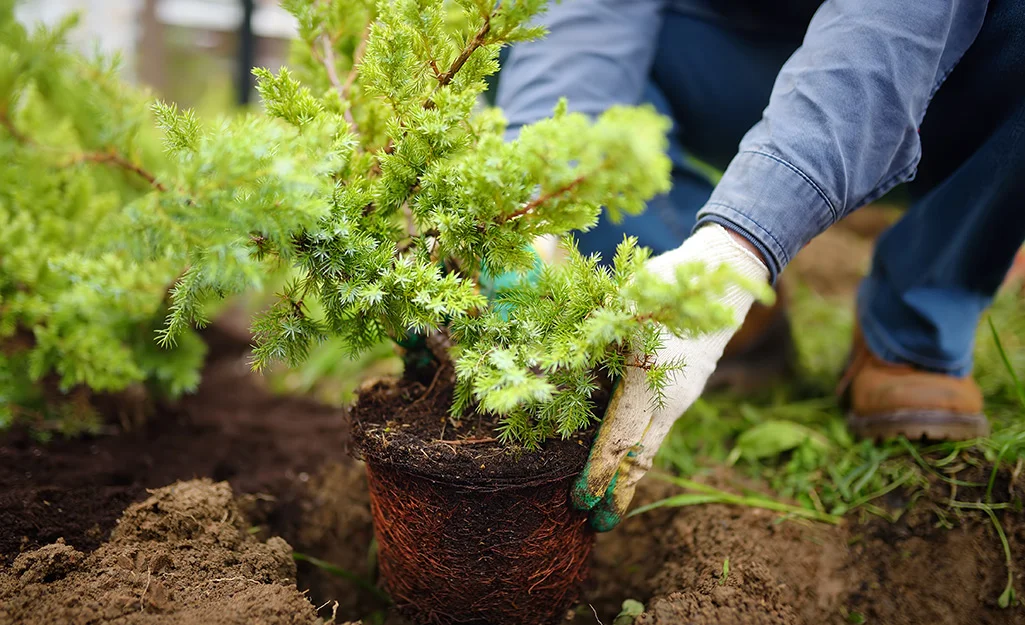The summer season is packed full of fun with swimming, barbecuing, picnicking, and enjoying the warm weather outdoors. While it’s always hard to let go of the fun days of summer, you can look forward to fall’s harvests, colored leaves, golden sunsets, and warm sweaters. Fall invites everyone to slow down, get cozy, and take a deep breath of crisp air. Each season has its novelties, but the fall months are a carnival for the senses—especially outdoors. Partner with a native tree nursery to start your fall planting projects.
Starting Fall Garden Projects
Every fall, your yard needs routine maintenance, including aeration, fertilizing, and top seeding. Vegetable gardens need to be cleaned up and fall crops need to be planted. There are also projects that require a little imagination, like how to solve landscape issues, add seasonal color, or invite local pollinators. Savvy gardeners know that planting in fall leads to big-time gardening success, and the solution is native plants and trees.
Bright colors and textures of Midwest’s native plants and trees add stunning beauty all year round. From blooming perennials and soft grasses to colorful trees and shrubs, native greenery offers seasonal interest. Native plants help reduce maintenance issues and add a unique appeal when used creatively around your landscape. Pennsylvania sedge is a flowering grass-like plant that makes beautiful ground cover in dry shade. Native sumacs can stabilize steep slopes and embankments in your yard and reduce mowing needs. Naturalizing sumacs is best when adding them to your yard. Bald cypress, swamp white oak, and blackgum trees absorb stormwater in low, wet areas. And the nectar of native flowers is always welcome to migrating pollinators.
Planting Natives in the Fall
Fall Has Ideal Temperatures for Root Growth
Fall soil temperatures are perfect for gardeners and roots. Across most areas in the United States, fall brings rapidly cooling overnight temperatures as daytime high temperatures moderate gradually. The decreasing hours of light and the fluctuation between warm days and cooler nights signal plants to halt leaf and stem production and increase root production. Planting in the fall is one way to encourage a robust, healthy root system with less stress on the plant.
While early fall’s mild air temperatures quickly turn crisp and cool, the soil in your garden and landscape will remain warm for a few more weeks. Even after the tree and plant leaves change color and gracefully float down to the earth, the roots of trees and shrubs will continue to grow and develop. The still-warm soil insulates and benefits autumn root development, extending the root-growing season far beyond the first frost date. The warm soil encourages roots to continue to grow as the tree goes dormant. Roots may continue to develop when soil temperature is low because the roots don’t have to support growing stems, leaves, and new flowers. In early spring, root growth accelerates and top growth begins.
Fall Reduces the Need for Supplemental Watering
The arrival of fall also increases the chance of rain. Rainwater reduces the need to rinse new plants, plus natural rainfall is healthier for plants than irrigation water. Rain falls in an even pattern and saturates the landscape uniformly. The rain is pH-balanced for optimal plant health. It has no dissolved minerals or purifying agents, like chlorine, from city water. Rain washes the entire plant, from leaf to stem, boosting photosynthesis before falling to the ground. It can even wash away accumulated salts from the soil. Regular precipitation through rain and snow continues through winter. And there also are fewer pest and disease problems.
Working With a Native Tree Nursery
A native tree nursery produces hundreds of native species that are great for planting in the fall. Many are grown using patented RPM technology for faster growth and unmatched survivability. Check out your local plant nursery to get more insight into best practices for fall planting.
Read More: What is Dagesteron? Discover Its Uses and Benefits

